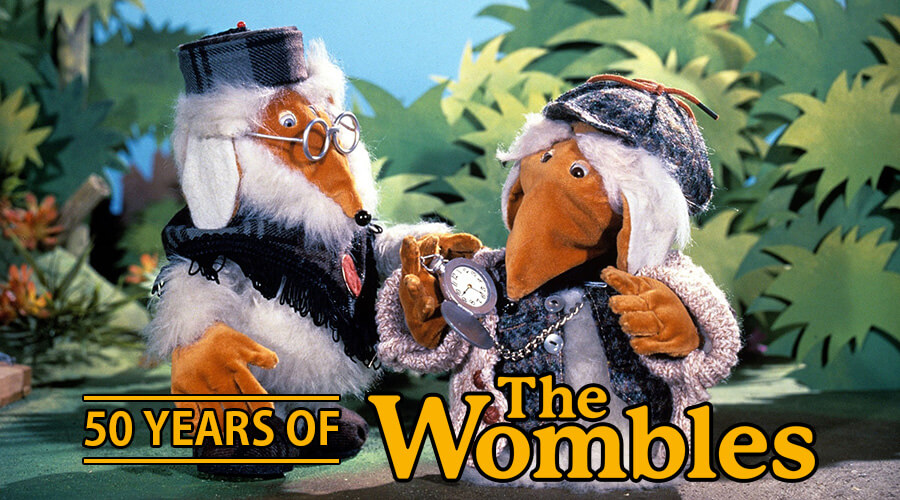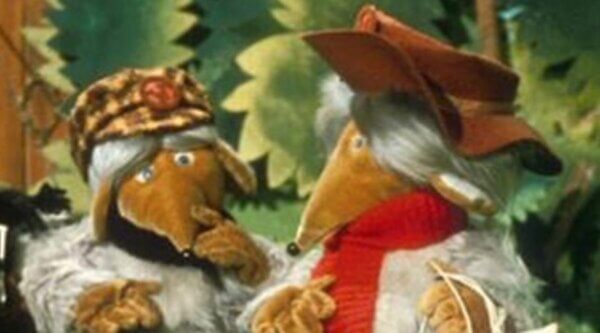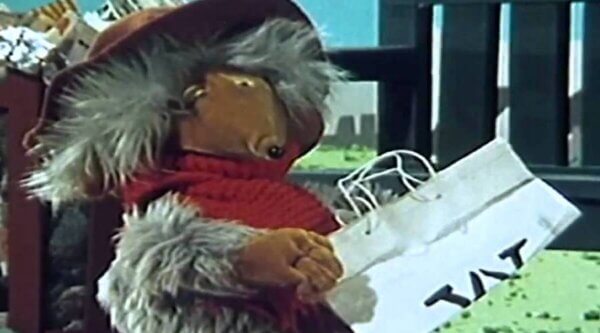Remembering The Wombles: 50 Years of Ivor Wood’s Classic Series

As children and families around England were sitting in front of their television sets on a wintry afternoon in 1973, little did they know that they would be watching a children’s show that would be truly special and groundbreaking for the time. Introducing everyone to The Wombles, this family of furry creatures taught everyone how to recycle and clean, all the while making everyone smile with their funny antics.
These five-minute episodes would go on to not just create a successful stop-motion animated series, but become a big name across popular culture that not many animated children’s shows were able to accomplish. But with a talented bunch of creative individuals behind the scenes with some big and bold ideas, it’s not hard to imagine that these creatures couldn’t hit the right tune with audiences. After fifty long years, these animators, writers, and key figures should be remembered for playing a large part in the history of creating one of the biggest British children’s series of all time.

The origins of The Wombles all started from a simple and innocent mispronunciation from a happy and excited child one festive morning. Deciding to take her two children for a drive on one particular Boxing Day, a writer named Elisabeth Beresford (1926-2010) took them to Wimbledon Common, a large nature reserve in South London. As they were all running around and enjoying the beautiful place to themselves, her daughter, Kate, expressed with joy how wonderful “Wombledon Common” was. And with that one particular mispronunciation, Elisabeth was inspired by an idea for a new children’s book.
Coming up with little creatures called The Wombles, she based each character on members of her own family which led to the creation of Orinoco, Wellington, Bongo, Tomsk, and Uncle Bulgaria. After years as a ghostwriter for Woman’s Hour at BBC Radio and a reporter for The BBC, her children’s book was finally published in 1968, introducing young readers to the small furry characters that helped to keep Wimbledon Common nice and clean.
Some of the stories from the book were eventually told on Jackanory, a BBC series that saw different presenters telling multiple stories to children at home watching the programme. Aware of The Wombles from some of their stories that were being read there and familiar with Elisabeth’s previous work on BBC Radio’s Woman’s Hour when she was an editor herself for it, Monica Sims (1925-2018) suggested that The Wombles could be adapted for a potential new series for The BBC. Looking for new shows to create for the channel since becoming the head of children’s programming in 1967, Monica thought that the furry family would be an ideal addition and she knew exactly who could bring the stories to life: Ivor Wood (1932-2004.)
Known for his work in the sixties for popular stop-motion animated shows like The Magic Roundabout, Paddington, The Herbs, and Postman Pat, Ivor was invited to direct and animate the series while FilmFair, the production company who he collaborated with on previous productions, would help produce the episodes. But before filming could commence, however, there was one problem that Monica wanted Ivor to help solve and that was to redesign the adorable little family. The original illustrations by Margaret Gordon (1939-1989) for the book appeared more teddy bear-like and they might not stand out in the growing children’s television market if their look wasn’t altered.
With his talents as a character designer with his previous attempts on Hatty Town, Ivor would have the daunting task of redesigning the characters altogether. Yet despite his talents, he and Monica would come to some creative differences when it came to giving these literary characters their new look. Encouraging Ivor Woods after the initial rejection in their first meeting, he eventually got the look that she was searching for. Giving them light brown faces, grey shaggy fur, and pointy noses, Monica finally gave Ivor the green light to go ahead with production now that the Wombles were given a unique redesign that both could be happy with.
With the first batch of five-minute scripts written by Elisabeth Beresford and all the Wombles received their makeover, Ivor jumped straight into the director’s chair and collaborated with another animator named Barry Leith. Like Ivor, Barry worked on some French productions, including working under Jacques Forgeot, a well-known French animator in the sixties, before joining FilmFair. He worked with Ivor as a budding animator as well as being responsible for the show’s cinematography and design for the sets used across various episodes. Even with the time required to bring each five-minute story to life, the two collaborated and used their skills effectively to bring Orinoco’s shenanigans or Uncle Bulgaria’s movements to life. And with only £24,000 to produce the earlier series, the two jumped into the challenging production head-on with the scripts that Elisabeth Beresford wrote herself.
But who would bring the voices of each character to life? That honour would be given to actor Bernard Cribbins (1928-2022,) who was previously known for his work on more mature titles like the Carry On films and The Railway Children. Demonstrating his ability to adapt to various roles, not also was Bernard given the role of narrator, but would provide the voices for all of the Womble family. He was even given the freedom to add his own improvisation to give each character their own quirks that helped to make them stand out even more from one another.

With the first series now completed in post-production with Bernard’s vocal talents, The BBC was ready to broadcast The Wombles for Britain to see. “Orinoco and the Big Black Umbrella” would be the first episode to start the whole series. On the 5th of February in 1973 at 17:40, children and families everywhere would fall in love with the laid-back and sleepy young Womble as he found himself flying around Wimbledon Common with comedic flair. Airing each episode before the news, the show gained a lot of viewers from those looking forward to the then-new children’s show and tuning in early to get ready for the news segment.
Over the course of the year, The Wombles would become a recognisable household name where everyone grew attached to a particular member of the beloved fictional family. Between the first series in 1973 to the second series in 1975, they became one of the most unexpectedly major pop bands of the seventies, which helped to make the show even more popular, even earning £17 million a year during the height of their success. The man responsible for the band was also the same man behind the catchy theme song, Mike Batt. Rather than accepting a payment of £200 to write and perform the theme song, he asked for the character rights to form a band with the Wombles instead. Called simply The Wombles, the success of the music group and their eight top ten tracks made even more people fall in love with them, helping to cement their impact on popular culture between both the first and second series in the seventies that not many shows did then.
The Wombles Legacy
While they are remembered this year for their fiftieth anniversary, what was the original animated series’ legacy between then and now? Elisabeth continued to write entries in the literary series, with the last one titled Wombling Free being published in 1978. Her work in literature and television saw her receive an MBE in 1998 before the show’s second iteration was broadcasted on ITV as part of their children’s segment, CITV. And her books are still being published today for children to rediscover and see what made them such appealing stories all the way back on Jackanory.
The last attempt to introduce The Wombles to a new generation of audiences was back in 2015, but the company that was producing it hit major difficulties. Attempting to bring Uncle Bulgaria and co to modern audiences, Dramatico Animation was making the first computer-animated series based on beloved characters, moving away from the stop-motion animation that previous productions relied on. Founded by Mike Batt, his ambition to reinvigorate the Wombles’ prior popularity, unfortunately, backfired, having to abandon the production due to financial difficulties and, ultimately, was forced to sell his rights to the property.
It would be wonderful for fans old and new to see The Wombles return from the underground and make a musical return overground with the current climate and waste issues the world faces today. Helping to teach the children about environmental awareness and how to make the planet a cleaner place, they deserve another chance, whether it’s as a new series or a one-off special to mark one of Britain’s most iconic children’s television shows in history. Until then, we will just have to remember what wonderful Wombles they were.
The Wombles have have had 10 of their original episodes remastered and uploaded to their YouTube channel @womblesofficial, with the rest arriving later this year,

